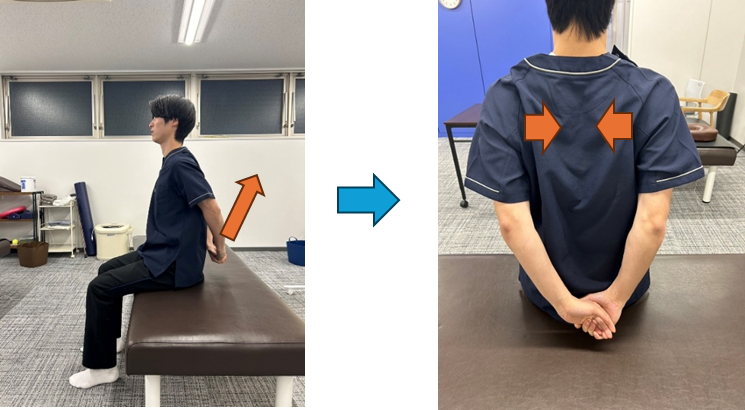Column The Relationship between Low Back Pain and Exercise: How to Work Out Efficiently
April 18, 2025
The population of Japan suffering from back pain is estimated to be at around 28 million people.
According to the Ministry of Health, Labor and Welfare’s National Survey of Basic Living Conditions, back pain is said to be a “national epidemic”, affecting both men and women equally with the highest prevalence rate. It is also estimated that nearly 80% of the population will experience back pain at least once in their lifetime.

The reason why so many people suffer from back pain is related to the way they spend their everyday lives.
In this article, we will discuss the relationship between exercise and back pain.
Exercise Therapy for Low Back Pain
According to the guidelines for the medical treatment of low back pain, exercise therapy for chronic low back pain is effective in improving the range of motion of joints, pain, health status, physical fitness, and muscle strength. *1
Engaging in exercise on a daily, ongoing basis can help reduce symptoms and improve one’s quality of life. By knowing the correct way to exercise and taking proper precautions, you can perform back pain exercises without strain on your body.
*1 Committee for Medical Guidelines of the Japanese Orthopaedic Association and Committee for Formulation of Guidelines for The Medical Treatment of Low Back Pain, (Guidelines for The Medical Treatment of Low Back Pain for 2019 ), 2nd revised edition, Nankodo, 2020 (in Japanese).
Exercises that can be performed in a sitting position
Exercises for the trunk
1. Sit with a mildly straight back.
*Be careful not to put too much pressure on the lower back.
Slowly move your pelvis from a straight back position (picture ①) to a rounded back position (picture ②).
Repeat about 10 times.
* Be careful not to feel pain while doing this exercise.
Key point: move slowly and with care, making sure your entire back is moving from the pelvis to the lower back.

Exercise for the ankles
1. Assume a relaxed, comfortable sitting posture.
2. Lift your heels up, then your toes, about 10 times, and repeat.
Key point: Do not exert too much force, and move your ankles lightly instead.

Exercise for the shoulder blades
1. Assume a relaxed, comfortable sitting posture.
2. Clasp both arms behind your back and move them as if you were pulling your arms upward.
3. Repeat about 10 times, while feeling both shoulder blades move inward.
Key point: Be careful not to try to forcibly pull your arms up, as this may cause shoulder pain.

Exercise involving sitting and standing
1. Assume a relaxed, comfortable sitting posture. (cf. picture ①)
2. Place your hands in front of your waist (picture ②) and slowly move your entire body forward while feeling the pelvic bones move toward the front.
3. Lift your hips when your upper body weight is properly balanced over your legs. (picture ③)
4. Raise your body up as you feel your entire legs stretch out. (picture ④)
Repeat standing up and sitting down 3 to 10 times. * Be careful not to feel pain or fatigue.
Key point: it is crucial to keep the center of gravity of the upper body securely over one’s feet.

Points of caution to keep in mind when exercising
Do not aggressively over-exercise or over-stretch in a way that may intensify the symptoms.
Be sure to work slowly and purposefully so as to avoid symptoms such as pain and numbness.
Keep it to a reasonable level so that fatigue does not leave its mark the following day.
In self-care, perseverance is key to obtain better results. Incorporate these exercises in a routine while taking care not to feel fatigue the next day.
Engage in these exercises daily
By continuing to work on these exercises daily, you will notice a gradual change in your body. It is easier to keep at it if you can turn it into a “ regular exercise routine” in your daily life, such as finding time to work on it, or doing it after your bath. Adopt an exercise regimen that fits your lifestyle and personality.
Do not overdo it.
If you end up slacking and give up after a short while, your body will not change at all, even if you took the trouble to take up exercising. Don’t be overly enthusiastic, don’t work out too hard, and try to exercise in a way that is sustainable.
Frequency and intensity of the exercises
Exercise should be incorporated in a daily morning and evening routine. If possible, morning, noon, and night is an even better option.
Since the body is stiffest in the morning, symptoms are most likely to occur then. Turn on your body on switch mode by exerting your body. At night, when the body is fatigued, relax the body a little and turn it on rest mode.
Also, since the parasympathetic nervous system is working in high gear for the night, do not work too hard in the evening or later. Stick to simple exercises that do not cause fatigue.
Try to engage in an exercise routine that will leave you feeling mildly fatigued afterwards. One common rule of thumb is to work in a way that will not leave you feeling tired the next day.
It is very important to persist in exercising to yield results. By continuing at your own pace, without overdoing it, your body will change in a positive direction.
If you are suffering from back pain, please consider a consultation at our clinic.
Related Articles
If You Led This Kind of Lifestyle as a Youth, You Have a Time Bomb Ticking in Your Lower Back!
Back Pain and Physical Inactivity: How Moderate Exercise can Keep You Healthy
The Relationship Between Stress and Back Pain: How to Maintain Good Mental and Physical Health
Low Back Pain and Posture: Reducing Pain by Adopting the Correct Posture



